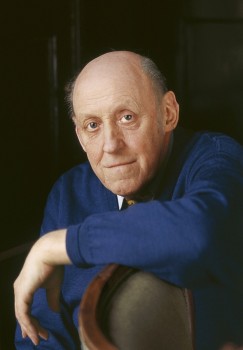In the news
The books that sold in May
10 June 2011 | In the news
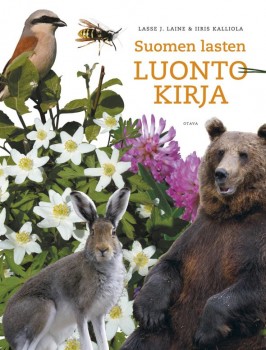 In May the Bookseller’s Association of Finland’s list of the best-selling Finnish fiction was still topped – as it was in March – by a collection of poems: Heli Laaksonen’s Peippo vei (‘The chaffinch took it’, Otava) is written in a local dialect spoken in south-western Finland. See our introduction to Laaksonen’s new poems.
In May the Bookseller’s Association of Finland’s list of the best-selling Finnish fiction was still topped – as it was in March – by a collection of poems: Heli Laaksonen’s Peippo vei (‘The chaffinch took it’, Otava) is written in a local dialect spoken in south-western Finland. See our introduction to Laaksonen’s new poems.
Pirjo Rissanen’s novel Äitienpäivä (‘Mother’s day’, Gummerus) was number two and Seppo Jokinen’s crime story, Ajomies (‘The driver’, Pulitzer/Crime Time) number three.
Tuomas Kyrö’s short prose about a grumpy old man resisting all sorts of contemporary fads, Mielensäpahoittaja (‘Taking offence’, WSOY), was number four.
Sofi Oksanen’s hugely successful novel about women and Estonian history, Puhdistus (WSOY, 2008) – English version: Purge –, still occupies number five on the list.
The most popular books for children and young people in May was the Finnish translation of a classic, Saint-Exupéry’s Le Petit Prince. A nature book for children, Suomen lasten luontokirja by Lasse J. Laine and Iiris Kalliola, was number two, and the cartoon kids Tatu and Patu occupied the third place (both published by Otava): Tatun ja Patun Suomi (‘Tatu and Patu’s Finland’), written and illustrated by Aino Havukainen and Sami Toivonen.
The translated fiction list was – as in March – topped by Maalattujen luolien maa (The Land of Painted Caves), by Jean M. Untinen-Auel, an American writer with Finnish roots. The novel is set in the late Paleolithic era.
On the non-fiction list there were books, in particular, on cooking, gardening, birds – and diets.
Jarkko Laine Prize 2011
1 June 2011 | In the news
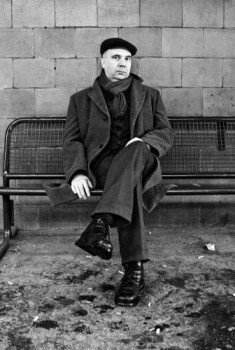
Juha Kulmala. Photo: Lotta Djupsund
The Jarkko Laine Literary Prize (see our news from 6 May), worth €10,000, was awarded to Juha Kulmala (born 1962) on 19 May for his collection of poems entitled Emme ole dodo (‘We are not dodo’, Savukeidas, 2009).
The prize is awarded to a ‘challenging new literary work’ published during the previous two years. Shortlisted were also two novels, Kristina Carlson’s Herra Darwinin puutarhuri (‘Mr Darwin’s gardener’, Otava, 2009) and Erik Wahlström’s Flugtämjaren (‘Fly tamer’, Finnish translation Kärpäsenkesyttäjä, Schildts, 2010).
Jarkko Laine (1947–2006) was a poet, writer, playwright, translator, long-time editor of the literary journal Parnasso and chair of the Finnish Writers’s Union.
Tove Jansson meets Lewis Carroll
27 May 2011 | In the news
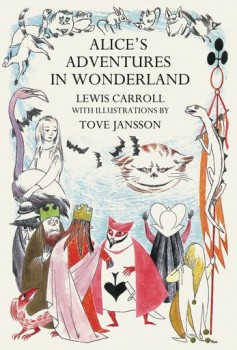 The British art museum Tate has recently reprinted two of Lewis Carroll’s books with illustrations by Tove Jansson, artist, writer and creator of the Moomins.
The British art museum Tate has recently reprinted two of Lewis Carroll’s books with illustrations by Tove Jansson, artist, writer and creator of the Moomins.
Tove Jansson (1914–2001) had begun to write and illustrate her Moomin stories for children in the late 1940s. In 1959 she was commissioned to illustrate the Swedish-language translation of Lewis Carroll’s The Hunting of the Snark (1874), about an ‘inconceivable creature’, the Snark, for the Finland-Swedish publisher Schildts.
After illustrating The Hobbit by J.R.R. Tolkien in 1962, Jansson then took on Carroll’s best-known book, Alice‘s Adventures in Wonderland, which was published in 1966 (see the pictures here).
The English-language original of Alice with her illustrations was then published in 1977 by Delacorte Press. Tate has now made Tove Jansson’s witty, perceptive visions of Alice available again, while the Snark with her original illustrations has now been printed in English for the first time.
Writers’ talk
13 May 2011 | In the news
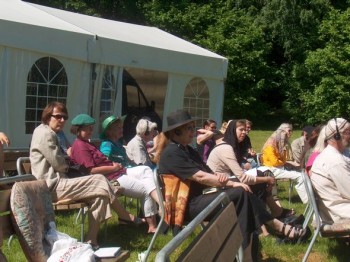
Under the midday sun: participants of the Writers' Reunion in 2005
Next month sees a new International Writers’ Reunion at Messilä Manor in the city of Lahti in central Finland. The first such meeting was organised in 1963.
Since then, more than a thousand writers, translators, journalists, critics and other book people, Finnish and foreign, have met for a few days every other year just before Midsummer to discuss various topics.
And the nights are light, and long, and the talking goes on.
This time the theme is ‘The writer beyond words’: how will the writer meet the limits of language and narration? (More on the topic in our article Beyond words.) The meeting takes place between 19 and 21 June.
So far about twenty writers, from Canada, Czech Republic, Denmark, Estonia, France, Germany, Great Britain, Ireland, Lithuania, Norway, Russia, Slovenia, Sweden and Udmurtia, are expected to arrive, as are some 20 Finnish participants. All debates and poetry evenings are open to the general public free of charge.
Best Translated Book Award 2011
13 May 2011 | In the news
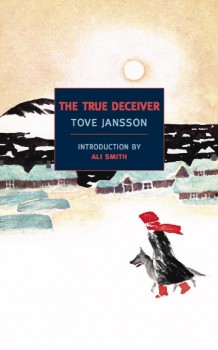 Thomas Teal’s translation from Swedish into English of Tove Jansson’s novel Den ärliga bedragaren (Schildts, 1982), entitled The True Deceiver (published by New York Review Books, 2009), won the 2011 Best Translated Book Award in fiction (worth $5,000; supported by Amazon.com). The winning titles and translators for this year’s awards were announced on 29 April in New York City as part of the PEN World Voices Festival.
Thomas Teal’s translation from Swedish into English of Tove Jansson’s novel Den ärliga bedragaren (Schildts, 1982), entitled The True Deceiver (published by New York Review Books, 2009), won the 2011 Best Translated Book Award in fiction (worth $5,000; supported by Amazon.com). The winning titles and translators for this year’s awards were announced on 29 April in New York City as part of the PEN World Voices Festival.
Organised by Three percent (the link features a YouTube recording from the award ceremony, introducing the translator, Thomas Teal [fast-forward to 7.30 minutes]) at the University of Rochester, and judged by a board of literary professionals, the Best Translated Book Award is ‘the only prize of its kind to honour the best original works of international literature and poetry published in the US over the previous year’. ‘Subtle, engaging and disquieting, The True Deceiver is a masterful study in opposition and confrontation’, said the jury.
Tove Jansson (1914–2001), mother of the Moomintrolls, story-teller and illustrator of children’s books, translated into 40 languages, began to write novels and short stories for adults in her later years. Psychologically sharp studies of relationships, they are written with cool understatement and perception.
Quality writing will work its way into a wider knowledge (i.e. a bigger language and readership) eventually… even though occasionally it may seem difficult to know where exactly it comes from; in a review published in the London Guardian newspaper, the eminent writer Ursula K. Le Guin assumed Tove Jansson was Swedish.
New literary prize
6 May 2011 | In the news
A new literary prize was founded in 2010 by an association bearing the name of Jarkko Laine (1947–2006) – poet, writer, playwright, translator, long-time editor of the literary journal Parnasso and chair of the Finnish Writers’s Union.
The Jarkko Laine Literary Prize will be awarded to a ‘challenging new literary work’ published during the previous two years. The jury, of nine members, will announce the winner on 19 May.
The shortlist for the first prize is made of Kristina Carlson’s novel Herra Darwinin puutarhuri (‘Mr Darwin’s gardener’, Otava, 2009), Juha Kulmala’s collection of poems, Emme ole dodo (‘We are not dodo’, Savukeidas, 2009) and Erik Wahlström’s novel Flugtämjaren (‘Fly tamer’, Finnish translation Kärpäsenkesyttäjä, Schildts, 2010).
The prize money, €10,000, comes jointly from the publishing houses Otava, Otavamedia and WSOY, the Haavikko Foundation, the City of Turku and the University of Turku.
Praise and prize for theatre on the edge of Europe
29 April 2011 | In the news
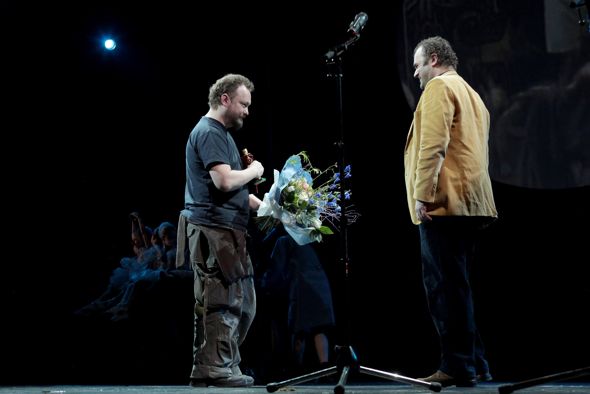
Kristian Smeds is awarded the XII Europe Prize of New Theatrical Realities in St Petersburg on 17 April, presented by a previous prize-winner, Italian theatremaker Pippo Delbono. Photo: rossetti/phocusagency
Theatremaker Kristian Smeds (born 1970) was awarded the XII Europe Theatre Prize for New Theatrical Realities in St Petersburg on 17 April. The prize, worth 30,000 euros, was – this time – divided between six prominent theatremakers or theatre groups. (For more information, see the Premio Europa website.)
The international prize jury consists of representatives of many institutions of the field. Since 1986 the main prize, the Europe Theatre Prize (worth 60,000 euros), has been awarded to 14 European theatremakers considered influential – among them, the directors and/or writers Ariane Mnouchkine, Peter Brook, Heiner Müller, Lev Dodin, Harold Pinter, and now, the German director Peter Stein. More…
Funny stuff favoured
13 April 2011 | In the news
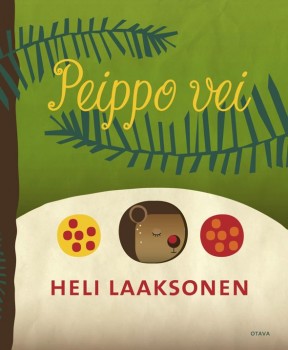 In March the Bookseller’s Association of Finland’s list of the best-selling Finnish fiction was topped – for a change – by a collection of poems. Like all her collections, Heli Laaksonen’s Peippo vei (‘The chaffinch took it’, Otava) is written in a local dialect spoken in south-western Finland.
In March the Bookseller’s Association of Finland’s list of the best-selling Finnish fiction was topped – for a change – by a collection of poems. Like all her collections, Heli Laaksonen’s Peippo vei (‘The chaffinch took it’, Otava) is written in a local dialect spoken in south-western Finland.
Perttti Jarla’s latest comics book, Fingerpori 4 (‘Fingerborg 4’, Arktinen Banaani) was number two – and, demonstrating the Finns’ love of cartoons and comics, another of his titles, Fingerpori book, Fingerpori – Kamppailuni (‘Fingerborg – My fight’) occupied fourth place, following Sofi Oksanen’s Puhdistus (Purge), published in 2008 and still number three on the list. More…
New members of the board
8 April 2011 | In the news
Two new members joined Books from Finland‘s Editorial Board in March: Mervi Kantokorpi and Pia Ingström replaced Nina Paavolainen and Tiia Strandén (who both joined the ranks of FILI – the Finnish Literature Exchange in February).
Mervi Kantokorpi is a freelance literary critic and scholar who specialises in Finnish fiction, both prose and poetry. Pia Ingström works as a literary editor at the Swedish-language Hufvudstadsbladet newspaper; her autobiographical book, Inte utan min mamma (‘Not without my mother’, Finnish translation: Äitiä ikävä, Schildts), was published last year.
Heavy stuff
1 April 2011 | In the news
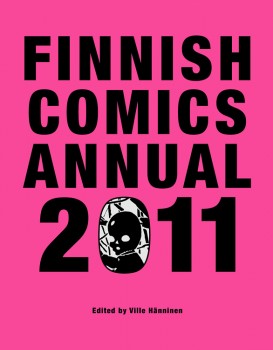 Finnish Comics Annual, by HuudaHuuda, is the first in a series of books introducing Finnish comics and graphic novels in English: edited by Ville Hänninen, the book features 20 Finnish comics artists. This massive work (two kilos) is published in cooperation with the Finnish Comics Association.
Finnish Comics Annual, by HuudaHuuda, is the first in a series of books introducing Finnish comics and graphic novels in English: edited by Ville Hänninen, the book features 20 Finnish comics artists. This massive work (two kilos) is published in cooperation with the Finnish Comics Association.
Finnish serial picture art celebrates its 100th birthday this year. One of a number of exhibitions related to this anniversary takes place at the National Library of Finland, entitled ‘Reverly, rambuctiousness, rough stuff’ (until 15 October). It presents pioneers of Finnish comics, rare comics albums and originals from early comics publications. Professori Itikaisen tutkimusretki (‘Professor Itikainen’s expedition’) by Ilmari Vainio was published in 1911 and is regarded as the first Finnish comic.
Springtime in Paris: Nordic writers on a French visit
25 March 2011 | In the news
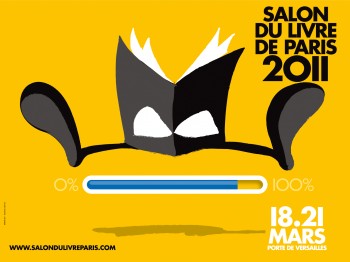 With an icy northerly wind at my back I took off from Helsinki and landed in Paris, where it was springtime and the cherry trees were in bloom. The aim of my trip was to join eleven translators from Finnish into all the main Nordic languages in examining the trickiest corners of the Finnish language and discussing the actual working conditions of literary translators, as well as the possibilities for Nordic literature to assert itself in the world.
With an icy northerly wind at my back I took off from Helsinki and landed in Paris, where it was springtime and the cherry trees were in bloom. The aim of my trip was to join eleven translators from Finnish into all the main Nordic languages in examining the trickiest corners of the Finnish language and discussing the actual working conditions of literary translators, as well as the possibilities for Nordic literature to assert itself in the world.
I was also going to meet with and listen to more than sixty writers from all the Nordic countries. Why did I have to go to Paris to do it? Because this was where Bokskogen, the Forest of Books, had grown.
At the Salon du Livre held in Paris from 18 to 21 March, at which the Nordic countries were the guests of honour, FILI (the Finnish Literature Exchange) was in charge of coordinating the Nordic pavilion, some 400 square metres in area.
The airy Scandinavian Forest of Books was filled with the murmur of Parisians in search of something Nordic to read and intent on having their newly purchased books signed by authors like Sofi Oksanen, Kari Hotakainen, Matti Rönkä, Monika Fagerholm, Katarina Gäddnäs, Seita Parkkola, Aira Savisaari, Johanna Sinisalo, Aino Havukainen and Sami Toivonen.
Before the official inauguration by France’s Minister of Culture Frédéric Mittérand the programmes had already been underway for four days. Just over a hundred professional people – publishers, translators and other cultural figures and institutions from across the Nordic countries – took part in various workshops to discuss common focal points and share experiences and best practices with each other and their French colleagues.
One of the major events was the Cultural Forum, a collaboration between FILI, the Nordic Council of Ministers and the Finnish presidency of the Nordic Council of Ministers. Its theme was the training of translators, and also the book industry in a global context.
In early March a dozen French journalists and booksellers toured Helsinki and Tammisaari (Ekenäs) in order to meet Finnish authors and interview them as a prelude to the big show. As a result Nordic literature also made its presence felt in France’s press and bookstores.
Translated by David McDuff
The books that sold
11 March 2011 | In the news

-Today we're off to the Middle Ages Fair. – Oh, right. - Welcome! I'm Knight Orgulf. – I'm a noblewoman. -Who are you? – The plague. *From Fingerpori by Pertti Jarla
Among the ten best-selling Finnish fiction books in 2010, according statistics compiled by the Booksellers’ Association of Finland, were three crime novels.
Number one on the list was the latest thriller by Ilkka Remes, Shokkiaalto (‘Shock wave‘, WSOY). It sold 72,600 copies. Second came a new family novel Totta (‘True’, Otava) by Riikka Pulkkinen, 59,100 copies.
Number three was a new thriller by Reijo Mäki (Kolmijalkainen mies, ‘The three-legged man’, Otava), and a new police novel by Matti Yrjänä Joensuu, Harjunpää ja rautahuone (‘Harjunpää and the iron room’, Otava), was number six.
The Finlandia Fiction Prize winner 2010, Nenäpäivä (‘Nose day’, Teos) by Mikko Rimminen, sold almost 54,000 copies and was fourth on the list. Sofi Oksanen’s record-breaking, prize-winning Puhdistus (Purge, WSOY; first published in 2008) was still in fifth place, with 52,000 copies sold.
Among translated fiction books were, as usual, names like Patricia Cornwell, Dan Brown and Liza Marklund.
In non-fiction, the weather, fickle and fierce, seems to be a subject of endless interest to Finns; the list was topped by Sääpäiväkirja 2011 (‘Weather book 2011’, Otava), with a whopping 140,000 copies. Number two was the Guinness World Records 2011, but with just 43,000 copies. Books on wine, cookery and garden were popular. A book on Finnish history after the civil war, Vihan ja rakkauden liekit (‘Flames of hate and love’, Otava) by Sirpa Kähkönen, made it to number 8 on the list.
The Finnish children’s books best-sellers’ list was topped by the latest picture book by Mauri Kunnas, Hurja-Harri ja pullon henki (‘Wild Harry and the genie’, Otava), selling almost 66,000 copies. As usual, Walt Disney ruled the roost in the translated fiction list.
The Finnish comics list was dominated by Pertti Jarla (his Fingerpori series books sold more than 70,000 copies, almost as much as Remes’ Shokkiaalto!) and Juba Tuomola (Viivi and Wagner series; both mostly published by Arktinen Banaani): between them, they grabbed 14 places out of 20!
The Tollander Prize to Ulla-Lena Lundberg
17 February 2011 | In the news
One of the biggest literary prizes in Finland is the Tollander Prize, awarded annually on 5 February, the birthday of he national poet J.L. Runeberg, by Svenska litteratursällskapet i Finland (the Society of Swedish Literature in Finland). The prize is worth €35,000.
The recipient of the 2011 Tollander Prize is Ulla-Lena Lundberg, a versatile writer of novels, short stories, poems and travel essays. ‘She moves freely in different landscapes, times and cultures, finding universality in locality, whether on the island of Kökar in Åland, in Africa or in Siberia’, said the jury.
Written between 1989 and 1995, Lundberg’s fictional trilogy of Leo, Stora världen (‘The big world’) and Allt man kan önska sig (‘Everything one can wish for’), focused on the seafaring history and evolution of shipping in the Finnish Åland islands. Her autobiographical work Sibirien (Siberia’, 1993) has been published in German, Danish and Dutch.
Read the extracts from her latest book, Jägarens leende (‘Smile of the hunter’, 2010), on rock art, reviewed on our pages by Pia Ingström.
Of the people, by the people
10 February 2011 | In the news
Democracy is doing well in Finland, according to a democracy barometer showing the development of the thirty ‘best’ democracies in the world.
Finland came second after Denmark and before Belgium in this latest update of the barometer, compiled by the University of Zurich and the Social Science Research Center Berlin, using a hundred empirical indicators to measure how well countries comply with the principles of freedom, equality and control and placed between the years 1995 and 2005.
At the bottom end of the scale were the democracies in Poland, South Africa and Costa Rica. The US was tenth, Japan 25th, Great Britain 26th and France 27th. Germany was placed 11th, and Switzerland 14th.
The democracy barometer measures nine quality indicators: the protection of personal freedom from infringements by third parties, especially the state; the rule of law; an active citizenship; transparency; participation; representation; political competition; a system of checks and balances; and the ability to implement democratic decisions.
According to the researches, the barometer shows no evidence of a ‘crisis of democracy’: there was an increase in the quality of democracy in 21 countries. However, the remaining nine countries exhibit a lower quality than in 1995 (Italy, the Czech Republic, Portugal, the US, Costa Rica, France, Ireland, Australia and Germany). Read more here.

